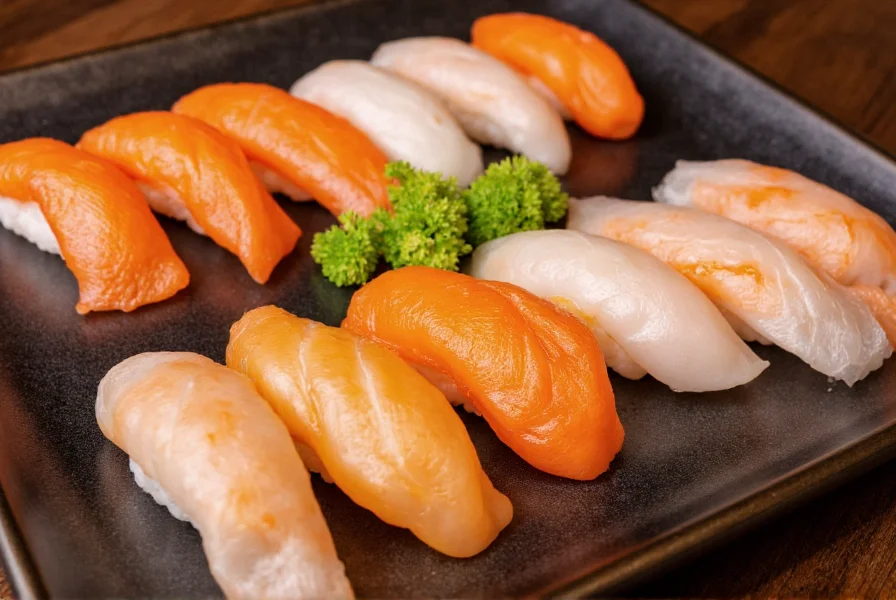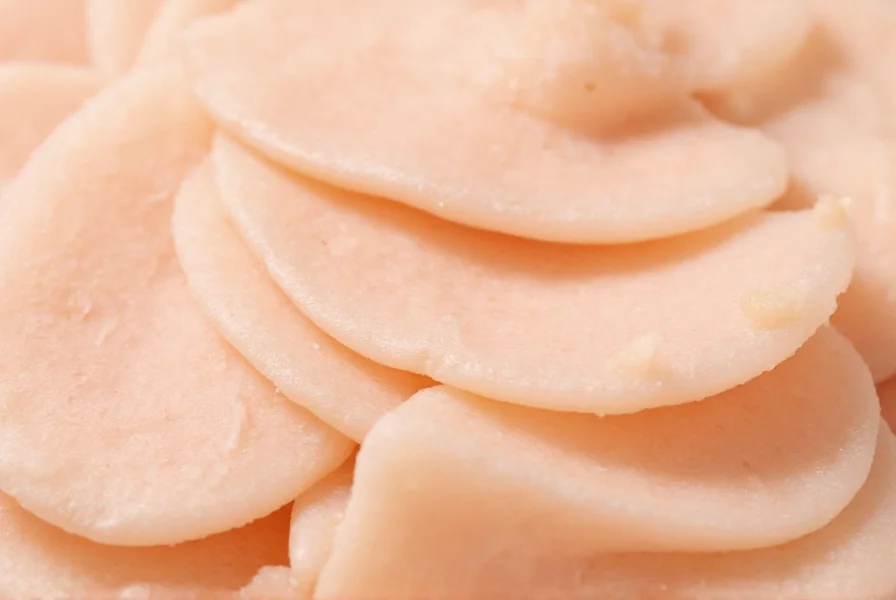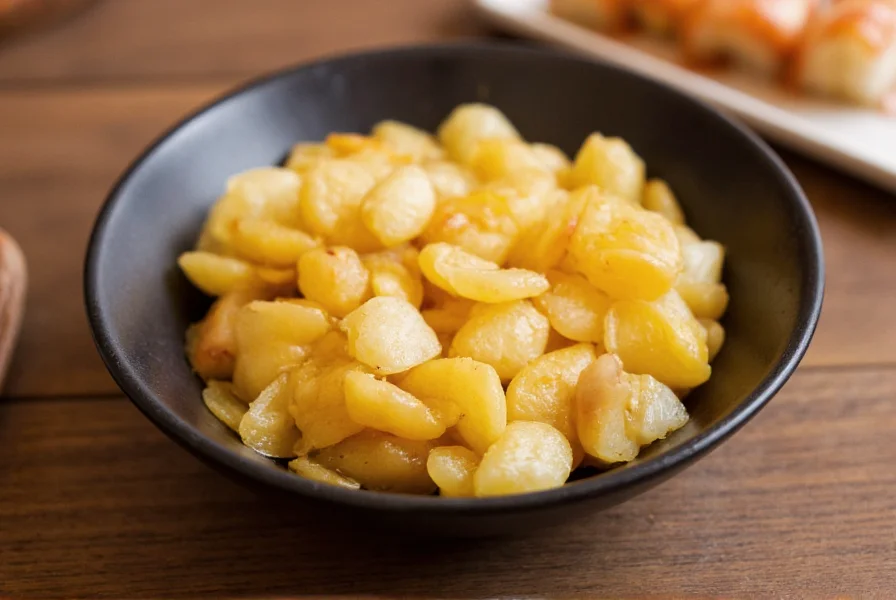Pickled ginger, or gari, has been an integral component of the traditional sushi experience for centuries. This carefully prepared accompaniment isn't merely decorative—it serves specific culinary and cultural purposes that enhance the entire sushi dining experience. Understanding its proper role can transform how you approach sushi meals and deepen your appreciation for Japanese culinary traditions.
What Exactly Is Gari?
Gari differs significantly from other forms of pickled ginger you might encounter. Made from young spring ginger, it's characterized by its:
- Thin, delicate slices
- Natural pale yellow color that turns light pink through oxidation (not artificial coloring in authentic preparations)
- Subtle sweetness balanced with mild vinegar tang
- Crisp yet tender texture
Unlike beni shoga (red pickled ginger), which uses mature ginger and has a stronger flavor and deeper red color, gari is specifically crafted for the nuanced experience of eating sushi. The proper way to eat pickled ginger with sushi involves using it between different fish varieties, not as a topping on the sushi itself—a common misconception among Western diners.

The Historical Context of Sushi Ginger
The tradition of serving pickled ginger with sushi dates back to the Edo period (1603-1868) in Japan. Originally, sushi was street food sold by vendors who needed practical solutions for maintaining freshness and enhancing flavor. Ginger's natural antibacterial properties helped preserve the fish, while its palate-cleansing qualities allowed customers to enjoy multiple varieties without flavor interference.
As sushi evolved from street food to high-end cuisine, the practice of serving gari remained, transforming from a practical necessity to an essential element of the dining ritual. This historical context explains why the proper use of pickled ginger with sushi remains so important in authentic Japanese dining establishments today.
Practical Functions of Gari in Sushi Dining
Gari serves three primary functions that contribute to the overall sushi experience:
| Function | How It Works | Benefit to Diner |
|---|---|---|
| Palate Cleanser | Neutralizes residual flavors between different fish types | Allows full appreciation of each sushi's unique taste profile |
| Digestive Aid | Ginger's natural compounds stimulate digestion | Helps process multiple courses of rich fish and rice |
| Flavor Enhancer | Subtle ginger notes complement delicate fish flavors | Creates a more complex and enjoyable tasting experience |
Sushi Ginger Etiquette: Proper Usage Techniques
Understanding sushi ginger etiquette separates casual diners from those who appreciate authentic Japanese dining customs. The traditional approach involves:
- Taking a small piece of gari between bites of different sushi varieties
- Placing it directly on your tongue (not using chopsticks to eat it with your sushi)
- Allowing it to cleanse your palate before proceeding to the next type of fish
- Never using it as a condiment mixed with soy sauce or placed on top of nigiri
This precise usage ensures you experience each fish's distinctive flavor without interference from previous selections. Many high-end sushi restaurants in New York City and Tokyo follow these traditions strictly, reflecting the importance of proper gari usage in authentic sushi dining.
Common Misconceptions About Sushi Ginger
Several widespread misunderstandings about pickled ginger served with sushi persist, particularly outside Japan:
- Misconception: Gari should be eaten with each piece of sushi
Reality: It's meant to be consumed between different sushi varieties as a palate cleanser - Misconception: The pink color comes from artificial dyes
Reality: Authentic gari develops its light pink hue naturally from young ginger's reaction with vinegar - Misconception: All pickled ginger is the same
Reality: Gari (sushi ginger) differs significantly from beni shoga in preparation, texture, and purpose
Quality Indicators for Authentic Gari
When evaluating the quality of pickled ginger served with sushi, look for these characteristics:
- Color: Should be a natural pale pink to light yellow (avoid bright pink which suggests artificial coloring)
- Texture: Crisp but tender slices that aren't mushy or overly firm
- Taste: Balanced sweet-sour profile without overwhelming vinegar sharpness
- Preparation: Thinly sliced with even thickness throughout
High-quality sushi restaurants typically prepare their gari in-house rather than using pre-packaged versions. The best gari has a delicate flavor that complements rather than competes with the sushi itself. Understanding these quality indicators helps identify authentic sushi establishments that respect traditional preparation methods.

Creating Your Own Gari at Home
For sushi enthusiasts wanting to experience authentic preparation, making gari at home requires:
- Fresh young ginger (spring ginger preferred)
- Rice vinegar
- Sugar
- Minimal salt
The traditional preparation involves thinly slicing the ginger, then soaking it in a sweet vinegar solution. The natural enzymes in young ginger react with the vinegar to create the characteristic pale pink color over several days. This homemade approach yields superior flavor and texture compared to commercial versions, enhancing your understanding of why pickled ginger is served with sushi in authentic settings.
Conclusion: The Essential Role of Gari in Sushi Culture
Pickled ginger represents far more than a simple accompaniment—it's an essential element of the sushi dining ritual with practical, historical, and cultural significance. Understanding the proper way to eat pickled ginger with sushi transforms the experience from merely consuming food to participating in a centuries-old tradition. Whether dining at a high-end establishment in New York City or preparing sushi at home, respecting the role of gari demonstrates appreciation for Japanese culinary artistry and enhances your ability to fully experience the nuanced flavors of each sushi variety.
Why is pickled ginger served with sushi?
Pickled ginger (gari) is served with sushi primarily as a palate cleanser between different types of fish. Its mild flavor and texture refresh the mouth, allowing diners to fully appreciate the distinct taste of each sushi variety without flavor interference from previous pieces.
Should I eat pickled ginger with each piece of sushi?
No, this is a common misconception. Proper sushi etiquette involves eating pickled ginger between different types of sushi, not with each piece. Take a small amount of ginger after finishing one type of fish and before moving to another to cleanse your palate.
What's the difference between gari and regular pickled ginger?
Gari is specifically made for sushi using young ginger that's thinly sliced and lightly pickled in sweet vinegar, resulting in a delicate texture and subtle flavor. Regular pickled ginger (beni shoga) uses mature ginger, has a stronger flavor, deeper red color, and is typically used with other Japanese dishes like yakisoba or gyudon, not sushi.
Why is sushi ginger pink?
Authentic gari develops its natural pale pink color through a reaction between the enzymes in young ginger and the vinegar in the pickling solution. The pink hue intensifies over time as the ginger marinates. Bright pink color often indicates artificial coloring, which is not traditional in high-quality sushi establishments.
Can I make sushi ginger at home?
Yes, authentic gari can be made at home using young ginger thinly sliced and soaked in a solution of rice vinegar, sugar, and minimal salt. The ginger should marinate for several days to develop the proper flavor and natural pink color. Homemade gari typically has superior texture and more delicate flavor than commercial versions.











 浙公网安备
33010002000092号
浙公网安备
33010002000092号 浙B2-20120091-4
浙B2-20120091-4